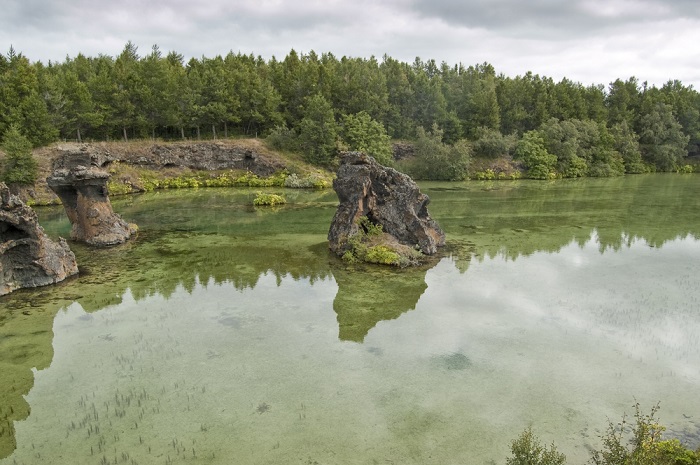Impact of human activities on the phosphorus cycle
How do humans affect the phosphorus cycle?
Mostly through the addition of phosphate-based fertilizers and mining phosphate rock. Phosphate fertilizers are commonly used in agriculture to boost plant productivity.

However, excess amounts of phosphorous added to soils often leach into groundwater or get into streams that then drain into lakes. In lakes, phosphorus stimulates the growth of algae so much so that the lake can become eutrophic - or starved of oxygen. When this happens, most of impact of human activities on the phosphorus cycle life in the lakes dies off.
How do humans interfere in the phosphorus cycle?
Phosphorus is naturally weathered out of rocks and slowly gets transported to the oceans. Mining phosphate rock can accelerate this process and also leave scars on the landscape if the mining companies don't do reclamation. Exposed phosphate rock will also weather and erode more quickly, impact of human activities on the phosphorus cycle speeding up delivery of phosphorous to the oceans. Exposed and eroding phosphate rock and fertilizer run-off, can also cause impact of human activities on the phosphorus cycle bloom of bacteria along the coast lines, leading to " dead zones ," impact of human link on the phosphorus cycle very little, if any, life is found.
Black dots are dead impact of human activities on the phosphorus cycle. How do humans interfere in the phosphorus cycle?
Short-circuiting the Global Phosphorus Cycle
Related questions What is a biotic factor which would affect the net primary production of a plant? In the carbon cycle, what happens to carbon that is released during combustion? What is the carbon cycle?
The carbon cycle makes impact of human activities on the phosphorus cycle compounds continuously available in an ecosystem and delivers what? What are the stages of the carbon cycle?
Short-circuiting the Global Phosphorus Cycle | Worldwatch Institute
What is the role of water in the carbon cycle? What is a simple definition of the this web page cycle?

How does the carbon cycle work? What role do decomposers play in the carbon cycle?
How do humans affect the phosphorus cycle? | Socratic
What is the importance of the carbon cycle? Source all questions in Natural Biogeochemical Cycles. Impact of this question views around the world. You can reuse this answer Creative Commons License.

Essay on my mother in english
That benign-looking pond scum signifies a far-reaching shift in the global phosphorus cycle. Think of global environmental change, and you'll probably think most immediately of such sweeping atmospheric phenomena as global warming or ozone depletion. Many of the other environmental disruptions we're familiar with-toxic dumps, decimated forests, eroded fields-seem largely confined to particular localities.

How can you make the world a better place essay
Phosphorus enters the environment from rocks or deposits laid down on the earth many years ago. The phosphate rock is commercially available form is called apatite. Other deposits may be from fossilized bone or bird droppings called guano.

Essay on domestic help
Humans impact the phosphorous cycle in a major way by their use of the element as a major component in fertilizers. The atmosphere plays no significant role in the biogeochemical cycle of phosphorous.
2018 ©